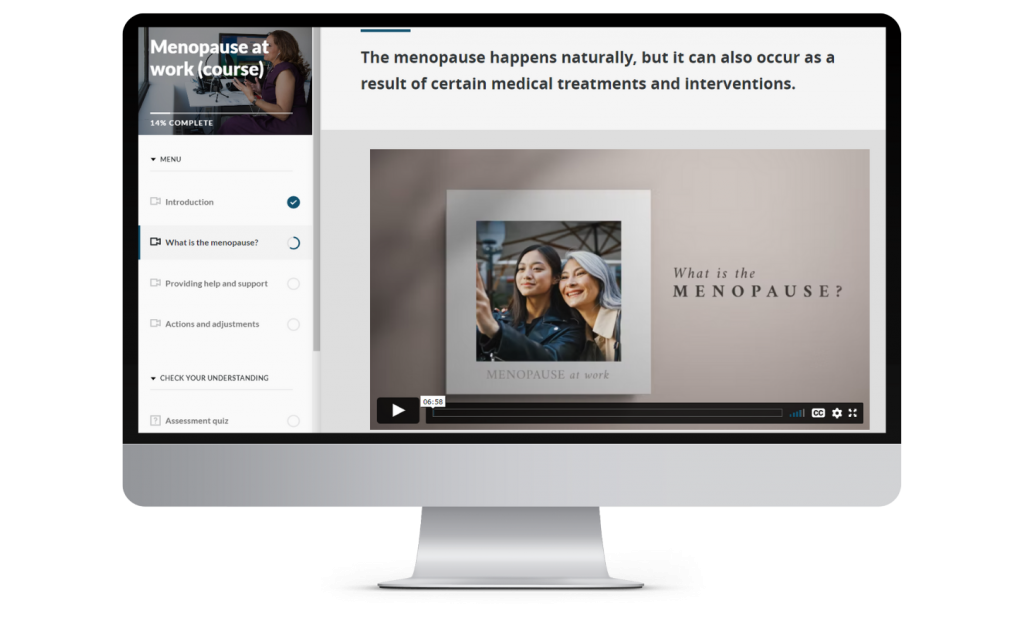Offering menopause leave supports an intersectional approach to diversity and inclusion
Menopause leave matters. In the UK alone, 60% of women have taken time off work due to menopause symptoms, 900,000 women have left their jobs due to menopause, and 99% of women said menopause symptoms had impacted their careers according to data from CIPD.
Businesses know staff turnover is expensive. And the costs are exponentially greater when staff have more experience and have developed long term organisational knowledge. It’s expensive to lose any staff, it’s even more expensive to lose experienced staff, while the benefits of investing in diversity and inclusion have returns many times greater than any initial investment.
We’ve written before about how employers can be more supportive of women experiencing menopause, and some companies have already moved forward with flexible working for all to help employees deal with whatever issues they have in their own time. Whether or not employees offer flexible working, all employers should be offering menopause leave.
How does the menopause affect people?
Menopausal symptoms can impact on productivity. It can cause fatigue, memory issues and anxiety, alongside significant negative stereotypes at work, or expected to just ‘grin and bear it.’ The impact of having to overcompensate can lead to significant stress and burnout, and can expound on existing symptoms.
While menopause is different for everyone, most women, at least 75%, will experience some of the menopause symptoms. Women around ages 45-55 are the most common age group experiencing menopause symptoms, although younger women and individuals with female reproductive anatomy can also experience similar symptoms. While menopause is a natural biological process, it can also be brought on my certain medical treatments like surgery or chemotherapy.
In short, if organisations don’t support employees during menopause, it will lead to increased time off, lower productivity, and ultimately loss of talented and experienced employees.
What does menopause leave look like?
Menopause leave is not complicated. It is a version of flexible and hybrid working that enables employees to reframe their relationship to work in order to deal with the symptoms and impact of this natural biological process.
Allowing that time away from the office or flexibility with set hours, even if only for a few days or weeks during some difficult times, will enable employees to manage their own symptoms and work when they are able. When menopause first occurs, it can take time to meet with doctors and get used to treatments such as hormone replacement therapy, so being supportive with flexible working, not making judgements of people leaving for appointments during the day, and building a wider culture of support so people feel able to manage their responsibilities at home, at work, and their health and wellbeing.
Menopause leave can be relatively simple to implement, and will save time, effort and investment by holding on to those employees, and not forcing them to choose between their wellbeing and their job.
- Allow work from home or hybrid working
- Create quiet areas at work to rest and recharge
- Offer additional days leave if you don’t already have a self-managed leave policy
- Don’t require medical certificates or doctor’s notes from people managing symptoms or attending appointments
- Consider menopause as a health-related issue and allow for reasonable adjustments
What’s the legal situation on menopause leave?
A bit complicated. In the UK, the House of Commons Women and Equalities committee published a report in July noting that a lack of support for the issue was pushing women out of work and created a list of 12 recommendations. Included in these suggestions are the request for the government to work with a large public sector employer to develop an pilot “a specific menopause leave policy” and the call for an amendment to the Equality Act to introduce a new protected characteristic of menopause. Their reasoning for the latter being that menopause is not relevant to Section 14 of the Equality Act (the section which protects against discrimination pertaining to race, disability, sex, and age, among other things), and that it is rather suited to Section 5.
But the UK government rejected the proposal to make a specific characteristic of menopause. However under the existing Equality Act 2010, employers could be guilty of discrimination on the grounds of age, sex or even disability discrimination if they fail to effectively take into account the potential impact of menopausal symptoms.
Menopause leave is already being successfully implemented in countries such as Japan, South Korea and Indonesia where the guidance and legislation gives clarity on how menopause policies should be implemented, although there is more to be done around ensuring that the offer of menopause leave is genuine.
How does menopause leave support diversity and inclusion?
Menopause affects two categories of characteristics normally protected in equality and anti-discrimination law: women and age. Menopause typically affects women around the ages of 45 to 55.
Company practice or policies that don’t support the menopause could be open to legal action as a result. The average cost of defending a tribunal is £8,500 which doesn’t include any awards or claimant’s legal fees, which the business needs to pay if the employee wins.
A company that doesn’t take menopause symptoms into account or ends up discriminating or even sacking an employee because of the menopause could be liable for discrimination claims.
Even if claims aren’t brought, not supporting women through the menopause will ultimately lead to many leaving the organisation, and potentially taking their skills and experience over to a competitor who does have a more progressive approach. Women leaving the business will have a knock on effect on the gender pay gap, increasing it rather than decreasing it.
When menopause impacts women who are moving into more senior positions and higher levels in their career, this will have an outsized impact on a company’s gender pay gap as well, not to mention hollowing out female representation at senior manager and board level.
What about men or the ‘male menopause’?
While the term ‘male menopause’ has been used in the press, according to the NHS and other health bodies, it’s an unhelpful label that doesn’t have a basis in medical science.
There are definitely health issues that affect men in older age and these symptoms can be similar to the menopause such as fatigue or loss of muscle mass. But whereas female menopause is a biological factor, there is no natural male-specific version.
Men can experience similar symptoms from a sudden drop in testosterone later in life, but testosterone deficiency is not a thing that’s ‘supposed to happen.’ While testosterone is expected to decline around 1% per year in men around 30-40, sudden drops can be alarming and have impacts. Men should seek treatment and testing to see if their unwelcome symptoms are being caused by a medical condition which can lead to low testosterone, or there is a testosterone deficiency.
Men as they age can also experience negative health impacts because of lifestyle issues such as stress, depression and anxiety brought on by a whole number of factors, such as poor diet, lack of exercise, too much alcohol, not enough sleep, and smoking.
Another benefit of a flexible and supportive leave policy as standard is that it encompasses everyone, and all staff can benefit.
The benefits of going menopause friendly
- Builds strong relationships
- Present yourself as an employer of choice
- Demonstrates you as a progressive, forward thinking employer
- Improves retention of experienced and talented staff
- Supports women at the peak of their careers
- Adds positive mental health and wellbeing
- Sets yourself as an inclusive employer who values women
- Increases productivity
- Reduces the cost of recruitment and ill-health absences
Your menopause plan
- Initiate training across the organisation on what is the menopause and what your policies are around it. Start having conversations and get rid of the stigma.
- Even if you have flexible working policies and progressive leave, implement a specific menopause leave policy anyway. This helps to reduce stigma and also focus on the specific impacts of sex, age and gender pay gap
- Look at the data – how are older women supported through the organisation? Is there a lack of women at more senior levels? This could potentially be as a result of poor menopause policies.
- Put together a policy. It can be simple and set out the terms of support, such as extra or uncounted sick days, along with flexible of hybrid working for those experiencing menopause symptoms.
- Remember the cost of recruitment is always more than the cost of retention. Understand your turnover data and examine it from an equality perspective. Who is leaving and why?
- Ensure staff know how to ask for help and extra support. Things as simple as sitting near a window or reducing the heat – these things can make a difference.
- OR – overhaul your absence and sick leave policies. Self-managed leave and flexible and hybrid working as standard allows employees to utilise whatever combination of options, days and times that makes them most productive.
Ultimately, great companies invest in their employees, and experienced employees are your business’s biggest asset. Don’t lose out by having outdated or inflexible policies that can be changed to be more supportive.
Taking action around the menopause also says a lot about your organisation and how it values and treats employees. Attracting and keeping the best talent is not easy, but implementing a menopause leave policy is one step towards making work better for women.
Skill Boosters’ film-based menopause at work course

Skill Boosters’ thought-provoking course looks at the common symptoms and long-term effects of menopause and sets out key steps for organisations to take in raising awareness and supporting staff.
This course will give a better understanding of:
- The different stages and symptoms of the menopause
- How symptoms can impact work and relationships
- Long-term postmenopause health risks
- Treatments and lifestyle changes that can help to alleviate menopause and perimenopause symptoms
- Reasonable adjustments in the workplace to support people going through menopause and perimenopause


